Exploring VR Kits: Design, Functionality, and Impact
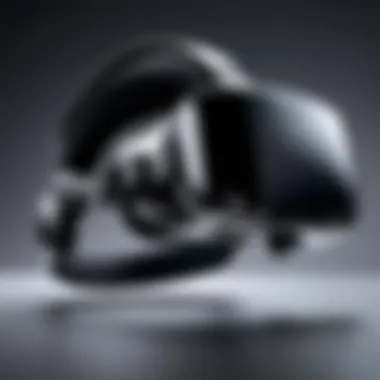

Intro
In a world increasingly defined by technology, Virtual Reality (VR) stands out not just as a buzzword, but as a pivotal tool reshaping how we experience, learn, and interact. The essence of VR technology lies within the kits that bring these immersive experiences to life. This article sets its sights on these VR kits, diving into their design intricacies, functionality, and how they alter user engagement across various sectors.
Within the ensuing sections, readers will find a rounded discussion covering the constituents of a VR kit, the progressive tech advancements propelling them, and a glimpse into their applications ranging from the realm of video games to critical professional training environments. Ny wisdom from years of usage and observation surfaces, offering insights that steer potential buyers towards informed choices when considering a VR kit for either personal pursuits or professional engagements.
Product Overview
When evaluating any VR kit, a solid product overview is paramount. Let's break down the essential aspects that distinguish these devices:
Brand information
Popular brands like Oculus, HTC Vive, and PlayStation VR have carved niches in the market. Oculus Quest 2, for example, has won accolades for its standalone versatility and affordability. Each brand offers unique strengths, aligning with varying user needs.
Key specifications
VR kits come equipped with different specifications tailored to enhance user experience. These may include:
- Resolution: Higher pixel density results in clearer visuals, impacting the user's immersion.
- Field of View: A broader field captures more peripheral vision, enhancing realism.
- Tracking technology: Inside-out vs. outside-in, each tracking method has its pros and cons.
- Refresh rates: Crucial for smooth imagery, especially in fast-moving scenarios.
Pricing
VR kits can vary drastically in price from entry-level devices around $300 to high-end models reaching above $1,000. Understanding what one gets for the price can demystify whether it’s worth the investment.
Performance Comparison
The performance of VR kits changes based on hardware and design. A thoughtful comparison of various devices can highlight their efficiencies.
Benchmark tests
Independent benchmark tests shed light on how different kits perform under similar conditions. Such tests often evaluate factors like render quality, frame rates, and stability during prolonged use.
Speed and efficiency comparisons
Some kits are designed to deliver swift and efficient processing, while others might excel in detail, albeit at a slower pace. Identifying the right balance according to personal preference is critical.
Features and Technology
A VR experience is defined by its features and the underlying technology. Here’s what to look out for:
Unique features
- Hand tracking: Enhances the immersive experience by allowing users to interact without controllers.
- Spatial audio: Offers a layered audio experience that mimics real-world sounds.
- Haptic feedback: Provides tactile sensations to elevate feelings of presence.
Technological advancements
The landscape of VR technology is in constant flux. Innovations such as wireless capabilities and augmented reality integration are just a few things pushing the boundaries of what’s possible.
Compatibility with other devices
Understanding a VR kit's compatibility with other systems or peripherals can expand its utility. For instance, some kits work well with gaming consoles, while others may be limited to specific platforms or PCs.
Pros and Cons
Every VR kit comes with its own set of advantages and drawbacks:
Strengths of the product
- Immersive experiences that engage users uniquely.
- Varied applications catering to different demographics.
- Regular software updates, enhancing usability over time.
Areas for improvement
- Pricing disparities between models.
- Occasional discomfort during extended use, affecting user satisfaction.
- Learning curves for certain complex applications.
Value for Money
The true measure of a VR kit's worth comes down to its value for money.
Cost-effectiveness
Evaluating whether the features justify the price tag is crucial for potential buyers. Many kits have excellent longevity with regular updates, enhancing value over time.
Long-term benefits
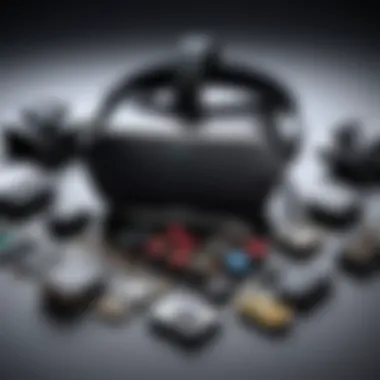

Beyond the initial purchase, the ongoing opportunities for training, education, and entertainment can deliver considerable returns.
Comparison with similar products
Consistently comparing a chosen VR kit against its peers helps in solidifying whether the investment aligns with individual or organizational goals.
"Understanding the intricacies of VR kits is essential not just for making informed purchases, but also for maximizing their potential utility."
As this exploration unfolds, each facet of VR kits will add layers of understanding to what has become a transformative element in both personal and professional settings.
Understanding Virtual Reality
Virtual Reality (VR) has transformed from a concept to an integral part of technology, shaping how we perceive digital experiences. This section underscores the essence of understanding VR, as it forms the foundation for fully appreciating the advancements and applications of VR kits. Grasping the principles behind VR not only enhances user experience but also influences decisions regarding hardware and software choices.
The Concept of Virtual Reality
At its core, virtual reality immerses users in a computer-generated environment, allowing them to interact with digital elements as if they were real. This is not merely an extension of traditional gaming or entertainment; it's a paradigm shift in how individuals engage with content. Users can find themselves in vibrant worlds that don't exist outside the screen—be it soaring above mountainous terrain or exploring historical landmarks. The immersive nature of VR can elicit emotional responses that are often deeper than those experienced in conventional media, providing a more impactful narrative.
Various industries are recognizing the potential of VR beyond entertainment. For instance, architects can use VR to visualize their designs, enabling clients to walk through building plans before they are constructed. Similarly, businesses are leveraging VR for marketing campaigns. Imagine stepping into a showroom, where potential customers can experience a product without leaving their home—this is the reality VR brings to the table.
How VR Technology Works
The functioning of VR technology combines several components to create a seamless experience. First, consider the headset, which is the primary interface for the VR world. The headset displays images and creates a sense of depth through stereoscopic rendering, offering users a 360-degree view of their environments.
Next comes the role of sensors. These track head and body movements, translating them into the virtual space. If you lean to the left or right, the view shifts correspondingly, making the experience feel genuine. This responsiveness is crucial; it helps reduce discomfort, allowing users to lose themselves completely in the experience.
How about audio? Spatial sound plays an essential role in VR. It offers sound cues that enhance the feeling of presence in the virtual realm. If a footstep approaches from behind, the sound will reflect that direction, further blending the lines between reality and virtuality.
Components of a VR Kit
Understanding the components of a VR kit is crucial for maximizing the potential of this immersive technology. Each part plays a distinct role, contributing to the overall experience. When purchasing or using a VR kit, recognizing the interplay of these elements can significantly enhance user satisfaction.
Headsets: The Gateway to Immersion
At the forefront of the VR experience lies the headset. This is not just a piece of hardware; it is what separates the real world from the virtual one. The headset delivers visuals directly to your eyes, creating an environment that can be both breathtaking and lifelike. One can think of it as a window into another realm—without the right headset, you might as well be looking through a fogged-up glass.
Modern headsets come with varying specifications, particularly in resolution and field of view. For instance, the Oculus Quest 2 boasts a resolution that immerses users in a stunning display. A higher resolution means clearer images, reducing the chance of pixelation, which can pull a user out of the experience.
The comfort of the headset is also vital. A poorly fitting device can lead to discomfort, which in time might deter longer usage. Consider the ergonomics—headsets ought to feel natural on the head, balancing snugness with comfort.
Controllers: The Tools of Interaction
Controllers function as the physical manifestation of interaction within these digital spaces. They allow users to point, grab, and manipulate objects, creating a sense of agency in what often feels like a boundless world. Think of controllers as the remote controls of your virtual universe, where the success of your adventure lies in the ease of use and feedback of these devices.
Typically, controllers can vary massively between brands and models. For example, the Valve Index Controllers are renowned for their finger tracking capabilities. This slight advance allows for more intuitive motion, translating the subtle hand movements to the screen. Such technology can be a game-changer in immersive experiences, especially in environments requiring intricate gestures.
It’s important to find a controller that feels right in your hands. Weight, button placement, and sensitivity are all factors that could either enhance or detract from the experience. Spending some time with different controllers can go a long way in personalizing your VR experience.
Tracking Systems: Ensuring Precision
A tracking system provides the backbone for your movement in virtual environments. Its main function is to ensure that every step, gesture, and glance is registered accurately. Nowadays, tracking systems use various technologies, from the sophisticated Lighthouse system by Valve to the inside-out tracking seen in simpler headsets like the Meta Quest series.
This precision matters. Imagine reaching out into a virtual space, only for your movements to lag or be misinterpreted. That disconnect can hinder the entire experience and lead to frustration. Therefore, different technologies can offer various tracking solutions—those who prioritize precision might lean toward external sensors, while casual users could be satisfied with integrated solutions.
In summary, when considering a VR kit, focus on these key components—headsets, controllers, and tracking systems. Assessing each part thoughtfully can lead to greater immersion, enhanced interaction, and overall satisfaction in your virtual explorations. Investing time in understanding these components means investing in a richer, more profound experience that technology has to offer.
"The components form a three-legged stool: remove one, and the whole thing can topple. So know your VR kit inside and out, and enjoy the show that unfolds."
By grasping these components, tech enthusiasts, gamers, and IT professionals align themselves for a richer journey into the realm of virtual reality.
Popular VR Kits on the Market
The landscape of virtual reality is as diverse as it is vibrant, with a multitude of options catering to different needs and budgets. Understanding the various popular VR kits available today is crucial for anyone looking to delve into this immersive technology. In this segment, we'll shed light on various high-end, mid-range, and budget-friendly options, focusing on their unique features and benefits.
High-End VR Kits
When we talk about high-end VR kits, names like the Valve Index and HTC Vive Pro often spring to mind. These kits are designed to provide an experience that is nothing short of astonishing. They often boast high refresh rates, exceptional field of view, and impeccable tracking precision.
- Features:
- High-resolution displays provide sharp visuals, minimizing the "screen door" effect.
- Advanced motion tracking allows for a more profound sense of presence within virtual environments.
- Superior audio immerses the user into the virtual space, enhancing the overall experience.
Using a high-end kit can feel like stepping into another world. The immersion level is particularly suitable for hardcore gamers and professionals in training simulations.
Mid-Range VR Options
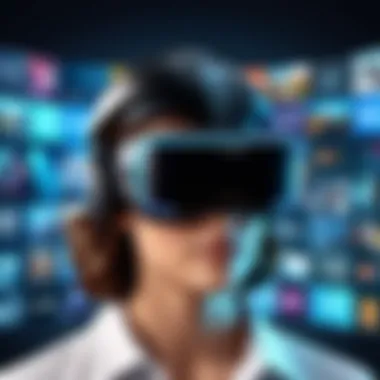
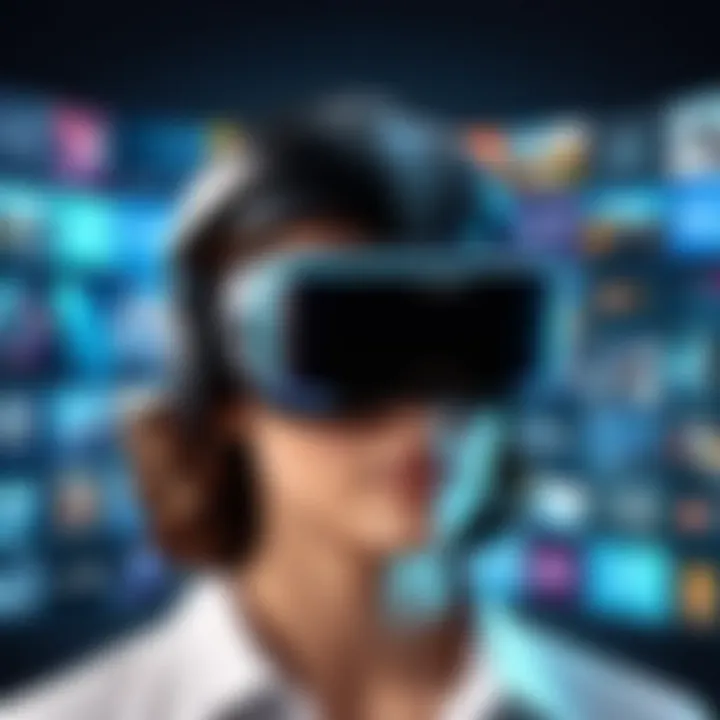
Mid-range options, like the Oculus Quest 2 and PlayStation VR, offer an excellent balance of performance and affordability. They cater to a broader audience without sacrificing too much in terms of quality.
- Benefits:
- Oculus Quest 2, for instance, is designed for standalone use, removing the need for external hardware. This is a major plus for those new to VR.
- Mid-range kits often come with a diverse library of games and applications, appealing to both casual gamers and serious enthusiasts.
- Overall, they can deliver an immersive experience suitable for social gaming and educational content.
These options are perfect for someone who seeks a reliable VR experience without breaking the bank.
Budget-Friendly VR Solutions
On the lower end, you still have options that can provide a taste of VR, albeit with some limitations. Devices like the Samsung Gear VR or Google Cardboard can be great gateways into the virtual world for those on a tight budget.
- Considerations:
- While these kits are not as powerful as their more expensive counterparts, they can still offer enjoyable experiences.
- Many budget-friendly kits utilize mobile phones as their display, which can be a turn-off for hardcore users but perfect for casual exploration.
- They serve as an excellent introduction and are suitable for those who want to try out VR before committing to a high-end device.
Applications of VR Kits
The significance of applications of VR kits extends far beyond entertainment. As technology evolves, the potential uses for VR are expanding rapidly across various fields. This section will delve into the transformative ways VR kits are being utilized, highlighting the profound impacts on user engagement and the specific advantages they offer in different industries. Whether improving skills through immersive training or redefining entertainment, VR kits are forging new paths.
Gaming: A New Era of Interaction
In the realm of gaming, VR kits have orchestrated a revolution. Imagine diving headfirst into a fantasy world, where each corner and shadow feels palpable. VR gaming enables players to become part of the game, rather than just observers. The sensory experiences—sight, sound, and even touch—create a level of engagement that traditional gaming simply cannot match. VR technologies like Oculus Rift and HTC Vive facilitate a depth of interaction, giving players the ability to influence their environment actively. The engaging nature promotes longer playtime, as players lose themselves in captivating narratives and environments.
However, the shift to VR gaming is not without challenges. Developers need to consider motion sickness in their design, ensuring a smoother experience for players. Compatibility with various hardware and platforms becomes critical to accommodate as many gamers as possible, enhancing the community around titles.
Training and Simulation: Enhancing Skills
In fields such as aviation, military, and emergency response, VR is proving invaluable. Training simulators can replicate dangerous and high-stakes environments without the associated risks. For instance, pilots use VR programs to practice emergency landings without the fear of crashing an airplane. This hands-on experience fosters quick decision-making and skill retention, mimicking real-life scenarios.
Moreover, VR training isn't limited to one sector. Companies across various industries are acknowledging its worth. Medical students can practice surgeries in a virtual space, learning through trial without real-life consequences. Businesses can also simulate workplace scenarios for employee training, refining soft skills like communication and negotiation. This delivers substantial ROI to companies committed to investing in effective training solutions.
Education: Transforming Learning Experiences
Education is another arena ripe for VR disruption. Traditional learning methods often fall short of engaging students thoroughly. However, educators harness the immersive nature of VR to bring lessons to life. Picture students walking through historical events or exploring the depths of the ocean right from their classrooms.
Research shows that immersive learning experiences can enhance information retention and increase motivation among students. Subjects once perceived as dull can spark interest when paired with a VR experience. Schools and institutions are beginning to recognize this, blending VR modules into their curricula to offer interactive lessons. From studying complex scientific phenomena to understanding intricate mathematical concepts, VR kits create a powerful educational tool.
Healthcare: Innovative Treatment Solutions
Healthcare utilizes VR kits to address several challenges, including patient treatment and medical training. VR is emerging as a tool for pain management, providing calming environments for patients undergoing painful procedures. Techniques such as guided imagery in a VR landscape have demonstrated effectiveness in reducing anxiety and discomfort, allowing patients to feel more in control.
Moreover, medical professionals use VR to practice surgeries and improve their skills without the pressure of live operations. Virtual environments allow simulation of various patient scenarios, honing their responses in real time. This shift not only boosts the confidence of healthcare providers but also minimizes risks when they encounter patients.
VR's applications in healthcare reinforce the idea that technology can transcend traditional limitations, making treatments more accessible and effective.
Technical Specifications of VR Kits
When it comes to selecting a VR kit, understanding technical specifications can't be overlooked. These specs are not merely numbers; they form the backbone of your virtual experience. Factors like resolution, field of view, and refresh rates directly influence how immersive and enjoyable a VR setup can be. In a digital landscape where clarity and responsiveness can make or break an experience, grasping these technical details will ensure that users choose wisely, aligning the kit's capabilities with their expectations and needs.
Resolution and Display Quality
Resolution is perhaps the first thing users notice in a VR kit. Simply put, it measures how many pixels are displayed. Higher resolution leads to sharper images, making virtual environments feel more lifelike. For example, while a display with 1080p may suffice for a casual gamer, those deeply engaged in intricate simulations or high-detail gaming might find that 4K or even 8K displays are crucial.
When talking about display quality, one must also consider aspects like color accuracy and contrast. A well-calibrated display can impact how users perceive virtual objects and environments. Moreover, advancements in technologies such as OLED and QLED displays have contributed enormously to the richness of colors and blacks, intensifying immersion. If the pixels look like they're spread thin, it’s like watching a movie on a small old TV – just doesn't cut it, does it?
Field of View: An Overview
Field of view (FOV) is a technical term that describes how much of the virtual world you can see at any given moment. It's analogous to how wide your physical eyes can see, and let’s be honest—nobody enjoys peering through a narrow tunnel. A wider FOV enhances spatial awareness, making simulations more believable. Typically, FOV values range from 90 to 120 degrees. The wider the view, the less likely you'll feel confined.
However, this isn’t just about having numbers; it’s about how they translate into experience. A wider FOV can create a more natural perspective, reducing the sense of motion sickness that some users report. All good in theory, but it really pays off when you're dodging intergalactic asteroids or trying to keep your balance in a virtual tightrope.
Refresh Rates and Latency
Refresh rate refers to how many times per second the display refreshes, and it’s measured in Hertz (Hz). A higher refresh rate means smoother visuals, which is near essential in fast-paced games. If you’ve ever watched a choppy stream, imagine that same feeling but multiplied when wearing a VR headset.
Ideally, a refresh rate of 90Hz or higher is recommended to ensure fluid movements that sync well with user actions. But here’s the kicker, it’s not just about refresh rates. Latency— the delay between a user's action and the corresponding render on the screen— plays a critical role as well. High latency can create an irritating lag, leading to disorientation and, worst-case scenario, motion sickness. A lag of even a few milliseconds could shatter the seamless illusion of reality that VR strives to create.
In summary, the combination of high resolution, a broad field of view, a robust refresh rate, and low latency creates an unparalleled VR experience that can genuinely transport users into another realm. It’s these technical specifications that truly define the user experience, turning a mere gadget into a gateway to another world.
User Experience and Interaction
User experience and interaction in virtual reality are as crucial as the technology itself. They bridge the gap between the user and the immersive worlds created by VR kits. Getting these elements right can redefine how users perceive and interact with both virtual environments and real-world applications.
Motion Sickness and Comfort Issues
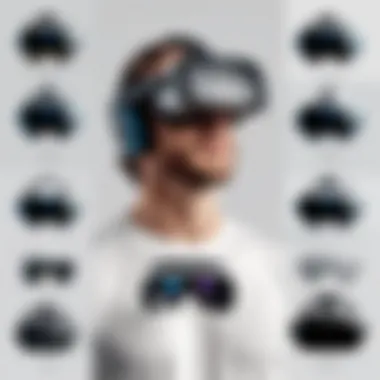
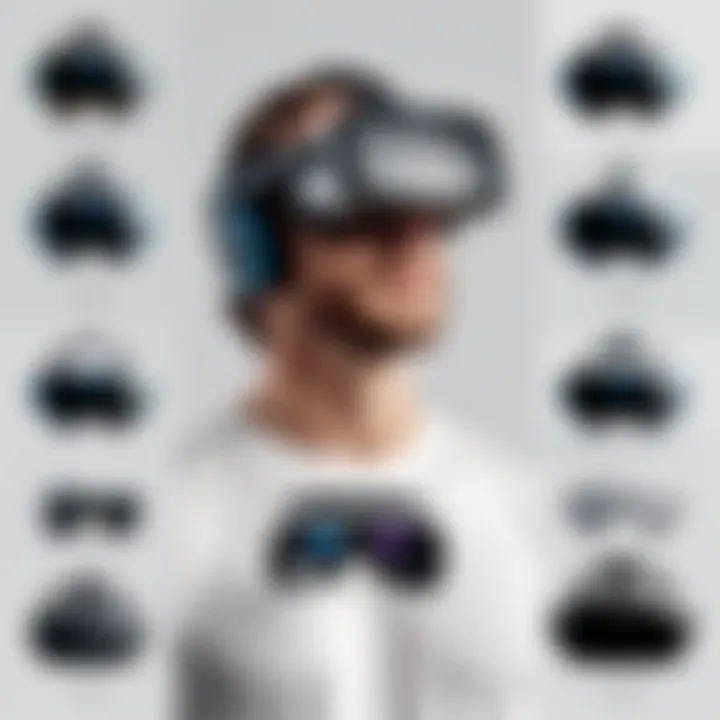
Motion sickness is a persistent concern for many users when diving into virtual reality. It arises from the disconnect between the inner ear's sense of balance and the opulent visuals displayed by the headset. People might feel dizzy, lightheaded, or even nauseous shortly after they start using a VR kit. To put it simply, when the body thinks it's moving, but the eyes perceive a different story, confusion ensues.
There are several strategies that developers use to tackle this uncomfortable sensation. One approach is improving frame rates and reducing latency to ensure that actions in the virtual space match users' movements seamlessly. Additionally, more recent models include features like adjustable field of view and play area boundaries to keep the user's physical presence aligned with the virtual environment.
Here are some factors worth considering to minimize discomfort:
- Gradual Exposure: Slowly introducing users to VR can help acclimatize them to the artificial environments.
- Comfort Modes: Many VR apps offer settings to reduce motion intensity or implement teleportation instead of smoother movements.
- Stability: Ensuring a stable environment by reducing complex visuals can alleviate tensions that lead to discomfort.
Social Interaction in VR
Even though virtual reality may initially seem like a solitary experience, social interaction plays a pivotal role in shaping how users engage within these constructs. Being in a shared space, even one that's digitally created, allows individuals to communicate and form connections that sometimes surpass those found in the physical world. In games like Rec Room or environments like VRChat, users interact as avatars, narrating their own stories and experiences.
The lack of face-to-face physical cues can lead to a different, but often enriching, form of communication. Emojis, gestures, and voice modulation contribute to expressing emotions and responses in virtual gatherings. Furthermore, VR supports collaborative tasks; think playing an escape room or solving puzzles with friends from across the globe.
Utilizing social VR environments entails balancing aspects that enhance connectivity while considering personal comfort. Users must feel safe and engaged, which promotes a more fruitful interaction.
In summary, understanding these dynamics of user experience influences how developers design VR platforms and content. They shape how people perceive the experience, ensuring that it is engaging, immersive, and ultimately enjoyable.
The Future of VR Kits
As we delve into the future landscape of Virtual Reality, understanding the upcoming shifts in this domain becomes crucial. The VR industry is ripe with potential, driven by rapid technological advancements and changing user expectations. With an increased focus on user experience and interaction, knowledge of these trends will be essential for tech enthusiasts and professionals alike. In this section, we will explore the technological trends that are shaping VR and discuss prospective innovations that will revolutionize how we use these kits.
Technological Trends Shaping VR
Virtual Reality isn't just a passing fad; it's continuously evolving, and several key trends are at the heart of this transformation. One significant trend is the move towards standalone VR headsets. Devices like the Meta Quest 2 have set the stage for more accessible technology without the need for cumbersome external computers. With improved battery life and processing power, these self-contained units are designed to provide optimal experiences on the go.
Another mention-worthy trend is the enhanced integration of social features. As VR platforms evolve, social interactions within virtual spaces have gained importance. Users are craving immersive environments where they can connect and collaborate, whether for gaming or professional purposes. This evolution is heavily influenced by the development of 5G technology, which promises faster data transfer and lower latency, making virtual meetings and social interactions much smoother.
"The future of VR lies in creating shared spaces where users can immerse together, no matter the physical distance."
Furthermore, artificial intelligence is making strides in VR applications. By incorporating AI-driven algorithms, VR can provide personalized experiences, adapting to user preferences and behavior patterns. This shift towards customized content delivery adds a layer of interactivity that makes VR not just a product, but an engaging experience tailored to individual needs.
Prospective Innovations
Looking ahead, several innovations are on the horizon that could act as game changers in the VR realm. One such innovation is the refinement of haptic feedback technologies. Imagine a virtual environment where you can feel the texture of objects or the sensation of wind on your face. Emerging haptic suits and gloves are in development, aiming to provide a more tactile experience for users. These advancements will elevate immersion levels, providing sensations that make virtual spaces that much more convincing and engaging.
Moreover, advancements in mixed reality (MR) are starting to blend virtual experiences with the real world. This hybrid approach may reshape industries like architecture and design, allowing professionals to walk through a project before it physically exists. The lines between digital and physical will increasingly blur, enhancing the creative process.
Lastly, the expansion of VR into the realm of mental wellness is noteworthy. There are ongoing projects exploring therapeutic VR applications for stress relief, cognitive therapy, and mindfulness. Imagine using VR to step into a serene nature scene or practice guided meditation in a perfectly rendered virtual environment. These innovations could open doors for previously unimaginable therapeutic methods, providing relief and healing to many.
Choosing the Right VR Kit
Selecting the right VR kit is akin to finding the perfect pair of shoes; comfort, style, and fit all matter. The notion of personalizing your VR experience is particularly pertinent, as not every kit suits every user. Understanding what you want out of a VR kit is essential, especially given the myriad of options available in today’s market. This section dives into the nuances that dictate your choice, from assessing your personal needs to ensuring compatibility with your existing hardware.
Assessing Personal Needs and Preferences
Choosing a VR kit means turning a reflective eye inward. Ask yourself what draws you to VR in the first place. Are you a passionate gamer, or a professional seeking new tools for training? Maybe you’re simply curious. Each of these paths weighs heavily on what features will matter most.
- Gaming Focused
If gaming is your primary interest, you might prioritize a headset with a high refresh rate and expansive library of games. You'll want to delve into titles which maximize immersion, thus a wide field of view and excellent sound quality can elevate your experience. - Training and Simulation
If your goal is to use VR for training purposes, consider how accurately it simulates real-world scenarios. Look for kits that offer precise tracking and customizability to fit specific training regimens. - General Exploration
For those wanting a taste of what VR offers, a budget-friendly kit with basic features might be a good start. It gives you room to discover what you enjoy without breaking the bank.
When it comes to features, reflect on both hardware and software. Users often find that they appreciate a balance between ease of use and advanced functionality. Choose a kit that feels intuitive—to avoid a steep learning curve that might discourage regular use.
Compatibility with Existing Hardware
Before pulling the trigger on a purchase, you’ll want to consider how well the selected VR kit meshes with the tech you already have. It would be a shame to invest time and money only to discover you need to buy a new computer, or other peripherals just to make it work.
- Computer Specifications
If your VR kit needs a powerful computer to run, check its recommended specifications beforehand. Many devices require specific graphics cards or processors. Take note of brands like NVIDIA or AMD. Their compatibility will often determine your VR experience. - Controllers and Accessories
You should also think about the controllers. Some VR kits come with their own controllers, while others may require additional purchases for full functionality. If you’re investing in a specific ecosystem, make sure you’re not left out in the cold having to learn new setups.
To illustrate, let’s say you have an Oculus Rift setup; it would be wise to ensure your PC meets, or ideally exceeds, the recommended system requirements. Regular upgrades can prolong the viability of your VR kit and enhance performance over time.
Consideration of compatibility helps avoid the frustration of mismatched technologies, promoting a more harmonious VR experience.
Culmination
As we bring our exploration of VR kits to a close, it's vital to understand the significance of this technology in today's world. Virtual reality has surpassed mere novelty, becoming a transformative force across various sectors. In this article, we've traversed the landscape of VR kits, emphasizing their intricate design and groundbreaking functionality. The importance of grasping these elements cannot be understated. Whether a gamer hungry for immersion or a professional seeking enhanced training tools, understanding VR technology paves the way for informed choices.
Recap of Key Points
Throughout this narrative, we’ve covered some key facets:
- Core Components: We identified headsets, controllers, and tracking systems as critical elements of any VR kit.
- Varied Applications: The adaptability of VR technology is remarkable. Its reach extends beyond gaming into training, education, and healthcare, showcasing its versatility.
- Technical Considerations: Key specs like resolution, refresh rates, and field of view were dissected, stressing the need for users to correlate these parameters with their specific use cases.
- Future Insights: Trends shaping the VR landscape were highlighted, setting the stage for potential innovations that might redefine user experiences in the near future.
Final Thoughts on VR Kits
In wrapping this up, it's essential to reflect on the evolving nature of VR kits. With technological advancements racing ahead, consumers are met with both excitement and confusion regarding selection. It’s not just simply picking a VR headset off the shelf; it’s about aligning personal preferences and professional needs with the right technology. From interactive gaming realms to intricate medical training simulations, the right VR kit can dramatically enhance experiences and outcomes.
"Understanding what’s out there and how it fits into your lifestyle can be a game changer in effectively utilizing virtual reality."
As VR continues to climb the innovation ladder, staying informed about options and capabilities will not only enhance individual experiences but also contribute to the broader acceptance and integration of VR in society. As we look ahead, let curiosity guide the exploration of possibilities.
For more details on virtual reality, check out resources on Wikipedia and Britannica. Discussions on various models can be found on forums like Reddit or insights on Facebook.







